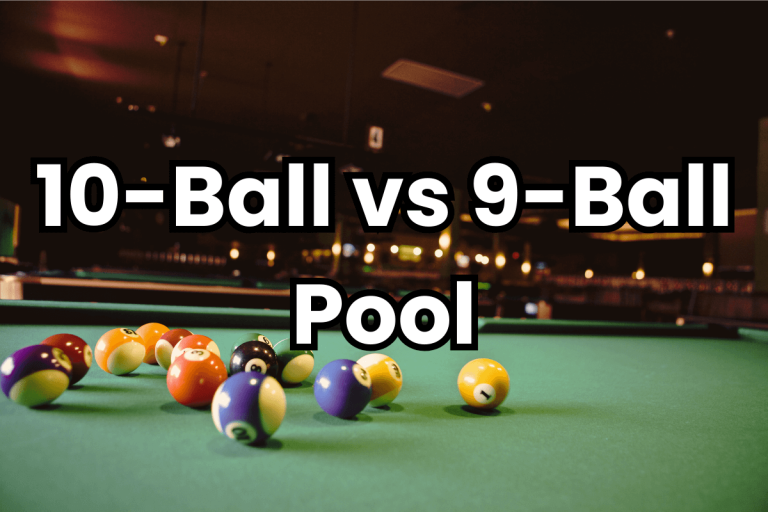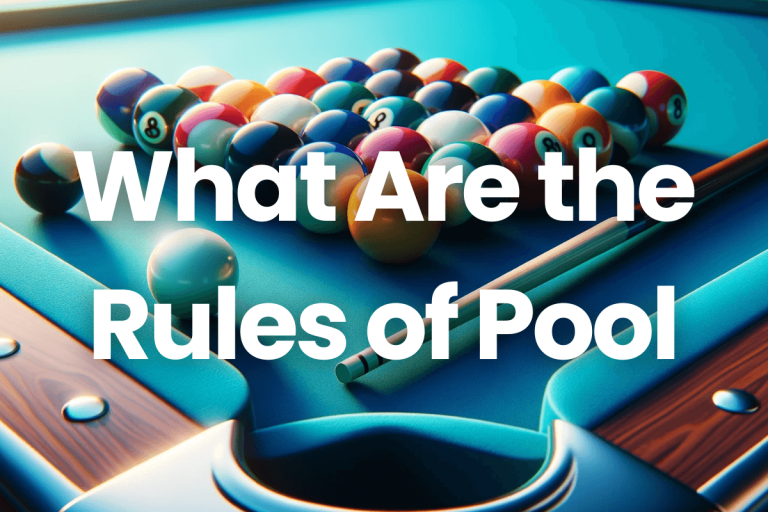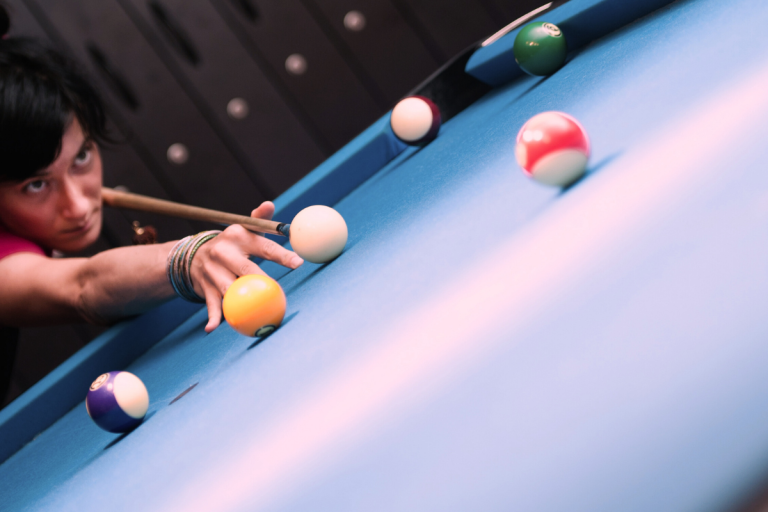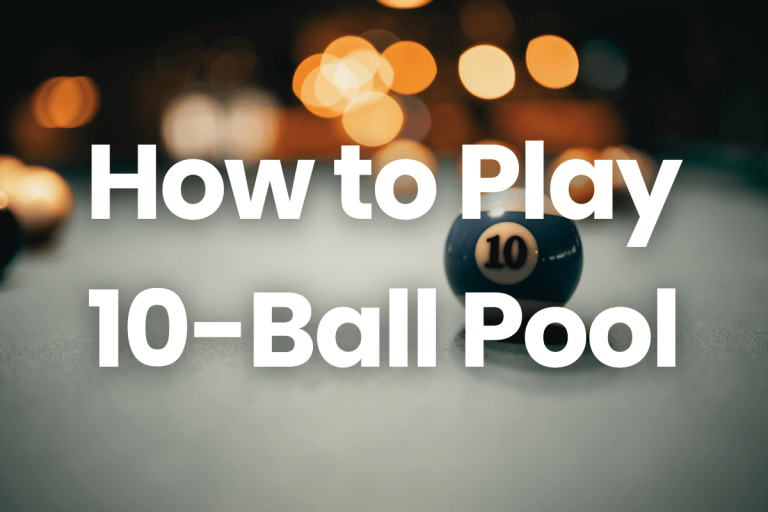How to Get Better at Pool? Pool techniques (2024)
Have you ever watched a professional pool player and wondered how they make the game look so easy? They seem to be able to pot any ball from anywhere on the table, and they always seem to be one step ahead of their opponent. The truth is, there are a few essential pool techniques that every player needs to know in order to improve their game. These techniques include everything from basic grip and stance to more advanced concepts such as spin and different types of shots.
In this guide, I’ll share some tips for How to Get Better at Pool.
How to Get Better at Pool
Keeping Proper Form
Think of it like the foundation of a house. Without a good foundation, everything else can fall apart.
In my early days, I ignored my form and missed shots left and right.
But once I focused on it, everything changed. Keep your stance steady, your grip comfortable, and your eyes on the ball. Maintaining a consistent form will make your shots more accurate. It’s simple, but it makes a world of difference.
Try it and see the improvement for yourself!
Choosing a Good Pool Cue
First, find a cue that’s the right length for you. It should feel comfortable and natural in your hands. The tip of the cue is vital, so make sure it’s rounded and not flat, as this can really impact your shots. Balance is also key. When you hold the cue around its middle, it shouldn’t feel too heavy on one end. The surface of the cue should be smooth, with no rough spots to disrupt your grip. The most important thing is to find a cue that feels right for you.
Use a loose grip
When you hold the cue stick lightly with your fingers. You should be able to move the cue stick back and forth easily without having to squeeze it tightly. A relaxed hand means a fluid shot. This will help you balance the cue and control your shots. Let the cue do its job; you just guide it.
Do practice to find the grip that gives you the most control for different types of shots.
Strike the ball smoothly
Chalk the cue tip before every shot
- Stand in a comfortable position. Your feet should be shoulder-width apart and your weight should be evenly distributed.
- Bend down and look at the cue ball and the object ball from the same height. This will help you align your shot more accurately.
- Use your backhand to support the cue stick. This will help you keep the cue stick steady and prevent it from moving around.
- Place the tip of the cue stick on the center of the cue ball.
- Take a deep breath and relax your shoulders.
- Smoothly pull the cue stick back and then release it smoothly to strike the ball.
- Follow through with your stroke after you strike the ball.
With practice, you will be able to strike the ball smoothly and accurately, which will help you improve your pool skills.
Perfecting Your Aim
- Eye the Target: Look at where you want the ball to go, not just at the cue ball.
- Line Up: Position your cue stick in line with your intended path.
- Practice with Purpose: Set specific targets on the table, and practice hitting them consistently.
- Stay Steady: Keep your body still. Only your arm should move when you take the shot.
- Adjust and Learn: Did you miss a shot? Think about why and adjust for the next one.
With time and practice, your aim will sharpen. It’s all about patience and persistence.
Practice Your Bridges
Bridges in the pool are essential for consistent shots. They act as the support for your cue, ensuring you have the right angle and stability for each shot.
- Open Bridge: Lay your hand flat, creating a “V” with your thumb and index finger. Slide the cue through it. Adjust your fingers to line up your shot.
- Closed Bridge: Loop your index finger around the cue. It forms a ring with the cue resting on the middle finger for added control.
- Elevated Bridge: Like the open bridge, elevate your hand using your fingers, forming a “tripod”. Useful when obstacles are in the way.
- Rail Bridge: For shots near the rail. Lay your hand on the rail, using either open or closed bridges, adjusting for the limited space.
- Mechanical Bridge: It’s an extended tool for hard-to-reach shots. Place it on the table, then guide your cue over it for those tricky distances.
In essence, bridges give you the stability and control you need, to adapt to different situations on the pool table. Practice them for a more versatile game!
Practice Breaking
It’s like starting a race – the first step matters!
- Position: Stand a bit further back than usual. This gives you more power.
- Aim: Target the front ball or second row, depending on your strategy.
- Stay Loose: Don’t tense up. Relax your grip and arm for a smoother strike.
- Follow Through: After hitting the balls, make sure your cue keeps moving forward.
- Practice Often: The more you break, the better you’ll get at spreading the balls evenly.
Remember, a good break can set the tone for the entire game. So, spend some time getting it right!
Practice on spin
Think of it as adding a twist to a dance move.
- Find the Spot: For side spins, hit the cue ball left or right of center. For top and bottom spins, hit above or below center.
- Easy Does It: You don’t need a hard hit. It’s about where you strike.
- Watch the Ball: Notice how it curves or changes direction after the hit.
- Experiment: Try different spin amounts to see various effects.
- Practice Makes Perfect: Keep trying spins in your games to get a feel.
Using spin can be a game-changer. So, take it step by step and enjoy the learning curve!
View Shots from Different Perspectives
Here’s how you do it:
- Move Around: Don’t just stand in one spot. Walk around the table.
- See the Angles: From different positions, you’ll spot new shot paths.
- Practice Visualization: Imagine the ball’s route before you hit.
- Change Your View: Sometimes, kneeling or adjusting your height helps.
- Ask a Buddy: Get a friend’s perspective. They might see something you missed.
By seeing from different viewpoints, you’ll catch better shots. So, explore all angles and make smarter moves!
Advance Pool Techniques
These methods can elevate your game from casual to competitive. Let’s explore some:
- English (Side Spin): Applying spin to the cue ball by hitting it left or right of the center. This alters the cue ball’s direction after it contacts another ball.
- Draw (Backspin): Striking the cue ball below center to make it reverse direction after impact.
- Jump Shots: When you intentionally cause the cue ball to jump over another ball, usually to avoid a foul.
- Masse Shots: A curve shot. You hit the cue ball off-center with a lot of spin, causing it to curve around obstacles.
- Bank and Kick Shots: Bank shots are when you rebound the object ball off a rail to pocket it. Kick shots involve the cue ball hitting the rails before contacting the object ball.
- Safety Play: Strategic shots that don’t aim to pocket a ball but rather to leave your opponent with no favorable shots.
- Break Control: Mastering different break techniques for different game types, like 8-ball, 9-ball, and straight pool.
- Pattern Play: Reading the table and determining the optimal order for pocket balls, minimizing movement and risk.
- Double Hits: This is more about prevention. When the cue ball and object ball are close, you must strike cleanly to avoid hitting the cue ball twice.
- Positional Play: Understanding angles and spins well enough to control the cue ball’s position for the next shot.
For all these techniques, understanding the physics of the pool is crucial. Watching professionals, joining a pool league, and consistent practice can help you master these advanced skills. Always remember, even the pros were once beginners; dedication and practice are key.
Conclusion
Improving in the pool is a blend of mastering basic techniques and exploring advanced strategies. Whether it’s perfecting your stance, practicing spins, or understanding complex shots, dedication is essential. Observing pros, seeking feedback, and consistent practice can sharpen your skills. Every game offers a learning experience, so be patient with your progress. With time, dedication, and the right approach, anyone can elevate their pool game to impressive levels. Dive in, enjoy the journey, and see the transformation unfold on the green felt.
FAQs
1. What’s the best way to practice pool by myself?
Practicing alone can be highly beneficial. Focus on specific skills like aiming, cue ball control, and different shot techniques. Setting up challenging shots and repeating them can help improve consistency. Additionally, recording yourself can offer insights into areas that need improvement.
2. Are there specific drills I can use to improve my aiming?
Absolutely! Try drills like the Ghost Ball Drill to visualize your shot, One-Rail Bank Drill to practice banking, and Straight Rail Follow Shot Drill to improve cue ball control and aiming.
3. How do I handle nerves during a competitive match?
It’s natural to feel nervous, especially during tight situations. Deep breathing can help calm nerves. Visualization techniques, where you imagine succeeding in your shots, can also boost confidence. Remember, even professionals feel nervous; what sets them apart is how they manage and channel that energy positively. Over time and with more match experience, you’ll develop your own strategies to stay calm and focused.







